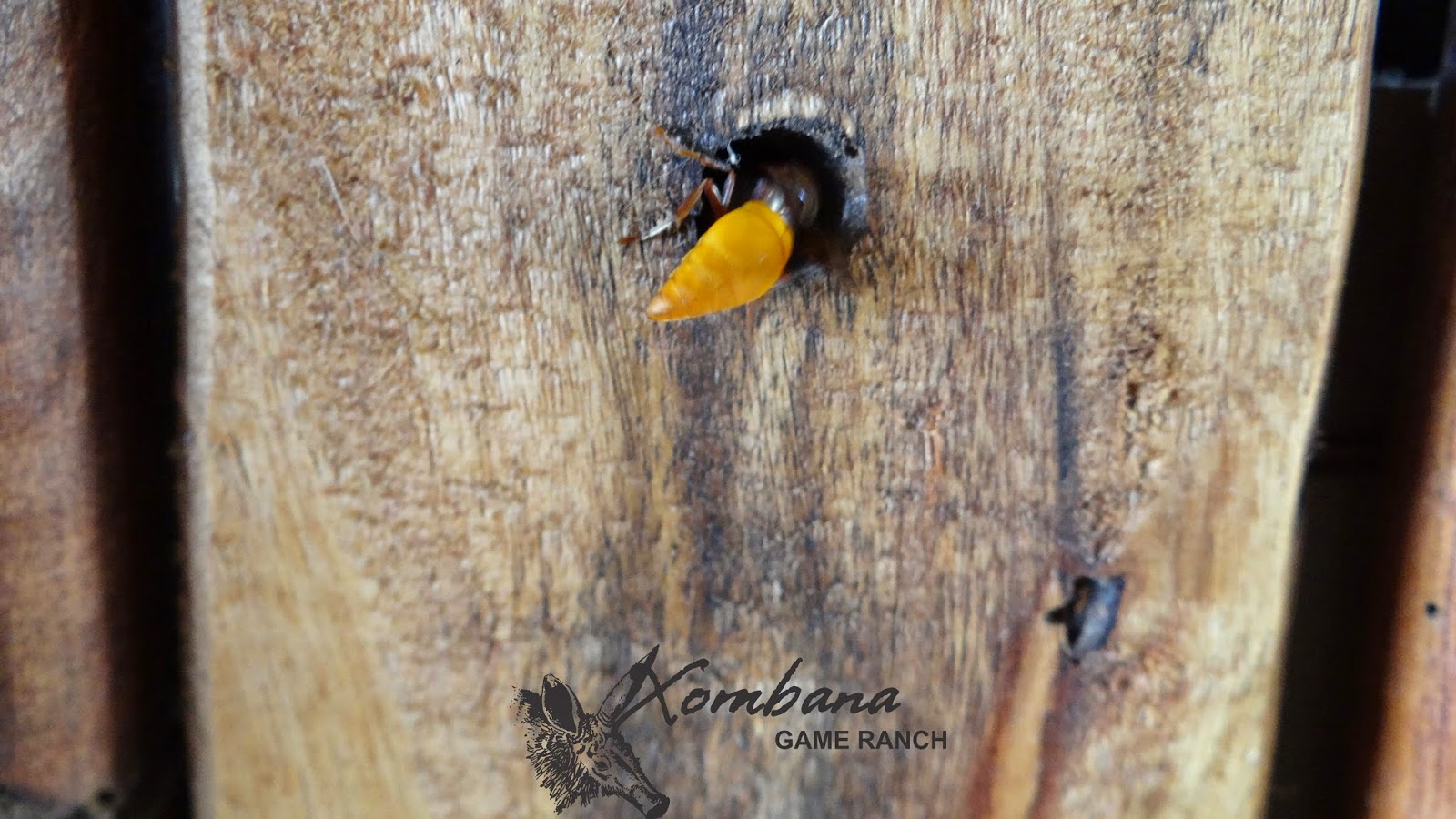Potter wasps and mason wasps are two members of the order Hymenoptera of about 198 000 species in the world. Some wasps and bees, and all ants, are social.
Wasps habitat is diverse and varies from forest, bushveld and gardens and is strongly associated with buildings.
Females nest in :
Existing cavities such as keyholes, open ends of piping and bamboo,
Holes in tree trunks, wood and walls
Empty cells in disused mud nests of other wasps.
Tricarinodynerus guerinii is a medium sized wasp with a black head and thorax and a red abdomen with brown markings. Pale brown wings and brown legs.
Females suspend an egg from the roof of each nest cell before introducing paralyzed caterpillars.
The cells are separated by mud partitions and the entrance provided wait a characteristic curved mud turret.
Source : a Field Guide to Insects















 On Sunday, 17 November 2014 we witnessed this amazing process.
On Sunday, 17 November 2014 we witnessed this amazing process.











































